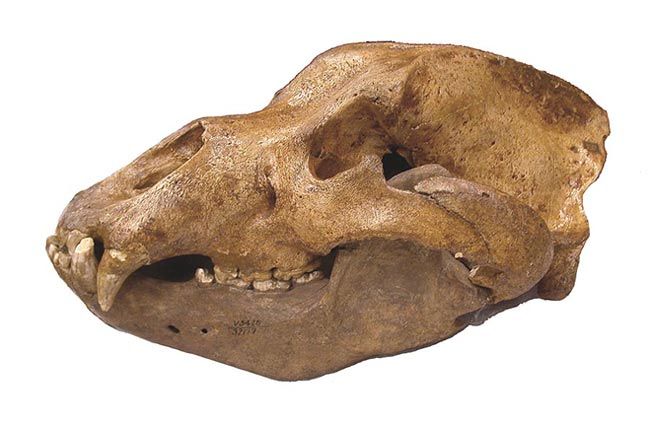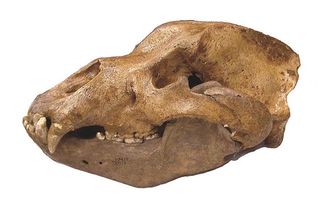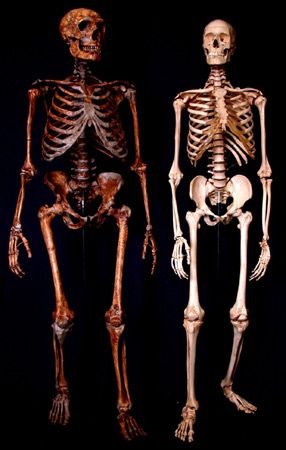Genetic Time Travel: Scientists Decode DNA of Extinct Animal

Scientists have unraveled snippets of the genetic code of an extinct bear species, proving a technique that could one day give a glimpse into the behavior of Neanderthals.
Generally speaking, the fossil record is mostly bones and teeth. But bits of DNA - the blueprints of life - sometimes cling to these dry specimens. If the genetic material can be extracted, it can offer a wealth of information about a long-dead creature.
Scientists and science fiction writers have long dreamed of using ancient DNA to resurrect dinosaurs or wholly mammoths. The new study, proving the concept works, also shows it would be very difficult to employ on more ancient creatures.
Edward Rubin of the Department of Energy's Joint Genome Institute and his colleagues were able to sequence, or decode, a small percentage of the genome from the Pleistocene cave bear, Ursus spelaeus.
"We could have gotten the whole bear genome - we had enough bear DNA," Rubin told LiveScience.
Next up: Neanderthal
The cave bears, closely related to modern brown bears, disappeared more than 10,000 years ago. Cave-paintings and fossil evidence suggest that ancient humans had contact with these animals.
Sign up for the Live Science daily newsletter now
Get the world’s most fascinating discoveries delivered straight to your inbox.
Rubin's team analyzed 40,000-year-old cave bear bones and teeth, collected from two caves in Austria. The relatively cold, dry conditions were optimal for DNA survival.
The scientists identified about 27,000 base pairs in the bear's DNA code - which, in its entirety, is somewhere around 3 billion base pairs long.
But sequencing the entire code would have been very time-consuming. The scientists consider this bear study merely a proof of principle, as they are more interested in exploring human ancestors.
"The next thing is Neanderthal," Rubin said.
This stocky hominid species is believed to have gone extinct around 29,000 years ago. Having a full or partial Neanderthal genome could tell us things that bones cannot - like what they ate, how their brain was built, or whether they spoke language, Rubin said.
The extraction technique might also be used on the 18,000-year-old remains of the recently discovered Flores Man, nicknamed "the hobbit." However, the diminutive skeletons were found in a tropical environment, which likely accelerated the DNA degradation process.
Bug contamination
Besides the fact that DNA falls apart over time, gene sequencing from fossils is hard to do because the DNA that is found is mostly from corpse-eating organisms.
"When we die, we are a nutrient source for microbes and bugs," Rubin said.
To get around this contamination, past studies have focused on DNA from mitochondria. Mitochondria are the energy suppliers in cells, but they also carry their own separate DNA for reproduction. Because there are often thousands of mitochondria in a cell, researchers have had better luck isolating mitochondrial DNA from fossils.
By finding species with similar mitochondrial DNA, biologists have drawn evolutionary family trees. But to learn what an extinct animal looked like or how it behaved, one needs to sequence nuclear, or genomic, DNA, for which there are only two copies per cell.
To go after genomic data, Rubin's team simply sequenced all the pieces of DNA in a sample - most of which ended up being from microbes - then separated out what DNA belonged to the bear by matching it to the known dog genome.
The full bear genome has not been sequenced, but bears and dogs have similar DNA - having diverged about 50 million years ago. Out of a few million base pairs, the scientists identified less than six percent that was from bear DNA. The results were reported in the June 2 online edition of the journal Science.
"It's neat work," said Rick Myers from Stanford University, who was not involved in the research. "This is very promising for studying evolutionary relationships in animals that died out not too long ago."
Human contamination
Recently, a separate group of scientists announced an effort to bring back the woolly mammoth from frozen semen. Whether this is possible remains to be seen, since DNA only lasts so long. According to Rubin, 100,000 years is probably the limit.
This would dash any hope of regenerating dinosaurs - a la "Jurassic Park." Even if a small fragment of DNA were to be found in, say, a mosquito trapped in amber, it would be hard to prove that it was 100-million-year-old DNA.
"You always have to worry that it is from a lab worker," Rubin said.
That was one of the reasons the scientists chose to first test their technique with a species not closely related to humans.
"What we found is not from recent contamination, since we have a strict policy: no bears are allowed to work in our lab," Rubin joked.
Related Stories
- Top 10 Useless Limbs (and Other Vestigial Organs)
- Top 10 Beasts and Dragons: How Reality Made Myth
- Scientists Build 'Frankenstein' Neanderthal Skeleton
- Pleistocene Park Could Solve Mystery of Mammoth's Extinction
- Scientists Recover Tissue From T. Rex
The Fossil

Credit: Joint Genome Institute
Cousins?

Evolution

Also ...













